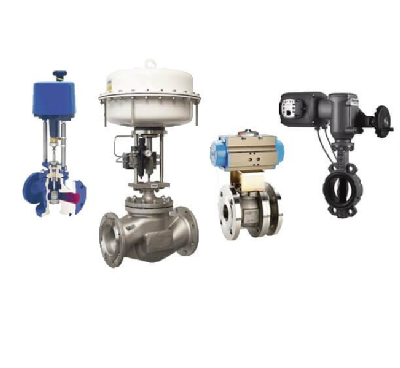How to Manage Environmental Impacts on Control Valve Efficiency
On this page
Control valves play a crucial role in modern industrial production, with their stability and performance directly affecting the safety and efficiency of the production process. However, the functionality of control valves is not only dependent on their design and manufacturing quality but is also significantly influenced by various environmental factors. External environmental factors such as humidity, corrosive media, and the stability of the control system can pose varying degrees of challenges to the operation of control valves. Therefore, understanding and effectively managing the impact of these environmental factors on the performance of control valves is key to ensuring the long-term reliable operation of equipment.
Control valves are vital in industrial applications, and their performance is affected by a variety of environmental factors. Here is an analysis of the impact of three main environmental factors on the performance of control valves, including humidity, corrosive media, and the stability of the control system.
Humidity is a key factor affecting the performance of control valves, especially in humid or rainy environments. In high-humidity environments, such as subtropical regions, parts in open spaces, such as the spring chamber in the actuator, are prone to accumulating excessive moisture. Over time, condensation may accumulate in these cavities. If electrical equipment is not sealed or the sealing is not perfect, even with waterproof measures, it may fail due to electrical short circuits after several months of use. Therefore, electrical equipment used in high-humidity environments should be completely sealed and heated if conditions permit to prevent electrical failures caused by dampness. In addition, electrical terminal blocks and wiring should also be treated to prevent mold growth that can lead to increased resistance and reduced strength of plastic components.
The impact of corrosive media on control valves is particularly significant. Control valves often face severe corrosion issues in applications such as chemical plants and marine environments. Components such as the valve body, actuator, connections of the valve stem, and open support structures of the diaphragm structure are particularly susceptible to corrosion. To prevent corrosion from damaging the performance of the valve, anti-corrosive materials or coatings are commonly used. Additionally, the actuator of marine valves is usually designed with a closed support and equipped with exhaust ports to prevent excessive pressure caused by leakage of valve stem packing. Some diaphragm-driven structures are also directly connected to the upper valve cover, becoming part of it, thereby eliminating exposed connection parts and reducing the risk of corrosion. Moreover, devices such as valve positioners and electrical converters should also be sealed in corrosive environments and, if necessary, can be purged with clean compressed air to ensure reliable operation of the equipment.
The stability of the control system also has a significant impact on the performance of control valves. In many applications, control valves need to provide power-off protection in emergency conditions. In such cases, the actuator, valve, and valve stem unit may be structurally damaged, leading to valve stem bending or valve stroke jamming. To avoid such problems, springs are usually installed inside the actuator of pneumatic diaphragm control valves to ensure that the valve remains closed in emergency conditions. Rotary valves sometimes use hydraulic vane actuators to prevent sudden and rapid valve closure by limiting the outlet of hydraulic fluid. In high-energy environments, rotary vane and piston actuators are usually equipped with flow control devices, which are installed in metal casings to avoid damage from external forces and can regulate the flow from the inlet to the outlet, ensuring the stability and reliability of the valve under different working conditions.
In some extreme environments, such as areas with severe corrosion or explosion risks, control valves and their components need to adopt intrinsically safe or explosion-proof structures. These environments may have hazardous factors that exist for a long time or intermittently, requiring equipment with a high level of safety and reliability. Explosion-proof equipment is usually heavier and requires greater operating force, which may limit its application in small valves because the actuator power of small valves may be insufficient, or the installation space is limited. In this case, intrinsically safe explosion-proof equipment can be used to ensure safety and performance. For example, in high-risk places such as mines or chemical plants, intrinsically safe explosion-proof equipment can effectively prevent explosion accidents caused by electrical sparks or high temperatures.
To ensure the efficient operation of control valves under different environmental conditions, in addition to optimizing the design and material selection, it is also necessary to develop and implement comprehensive management and maintenance strategies. This includes regular inspection and maintenance of valves and their components, timely replacement of damaged or worn parts, ensuring the integrity of seals and anti-corrosion coatings, and regular testing of the insulation and explosion-proof performance of electrical equipment. Through integrated management and maintenance, the service life of control valves can be greatly extended, their control performance can be improved, and maintenance costs and operational risks can be reduced.
In summary, the performance of control valves under different environmental conditions is affected by various factors, including humidity, corrosive media, and the stability of the control system. To ensure the efficient and reliable operation of control valves in practical applications, these factors must be comprehensively considered and corresponding protective and maintenance measures must be taken. With an in-depth understanding of environmental impacts and systematic management and maintenance strategies, the durability and working performance of control valves can be significantly improved, reducing the failure rate and maintenance costs, thus achieving the continuous and stable operation of industrial production.

